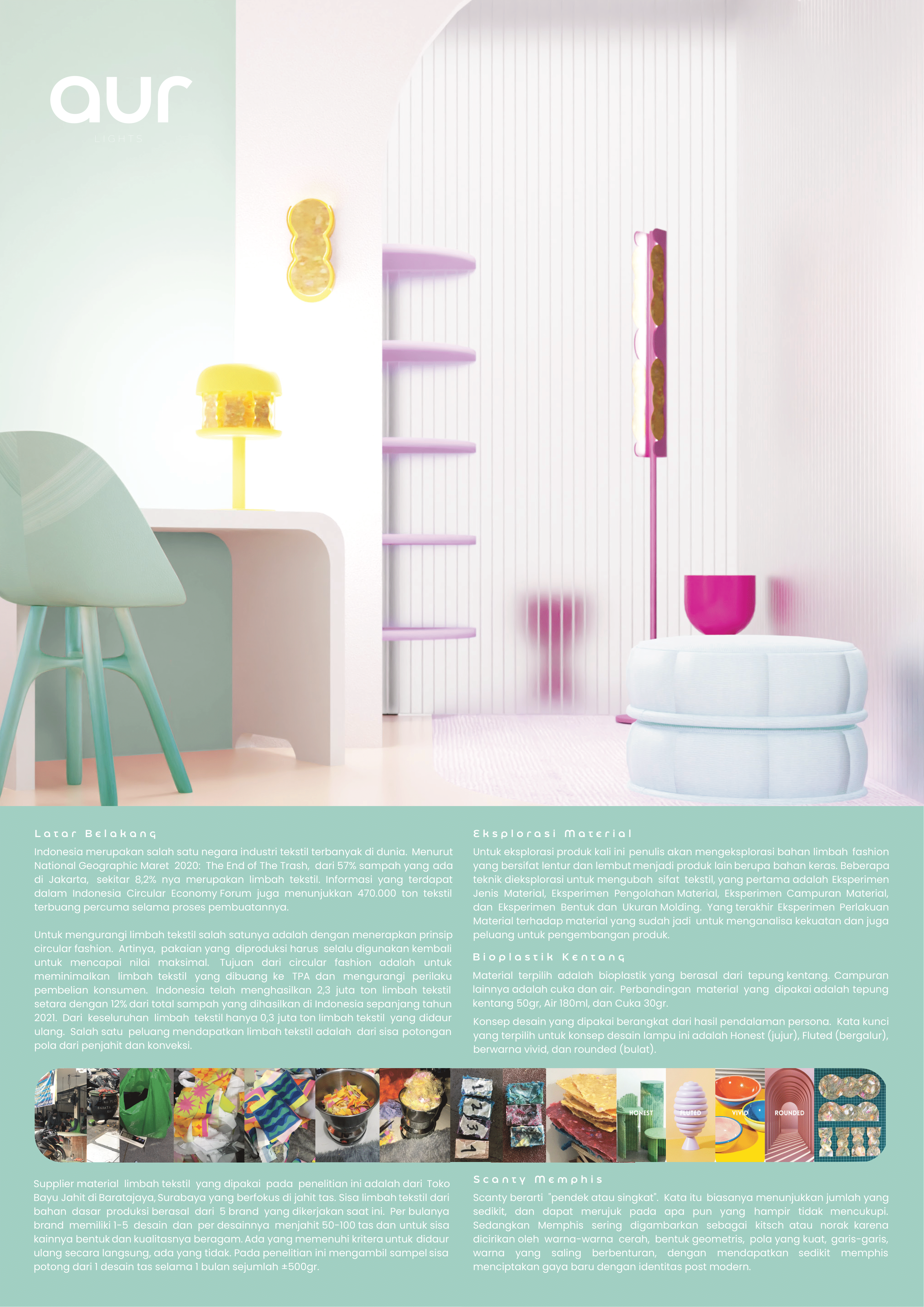Background
The fashion industry is one of the keys to economic development, consequently the fashion industry also contributes a large portion of the world’s waste. The market in the fashion industry is constantly growing and the fast fashion phenomenon is giving consumers more choices, allowing them to buy more clothes at affordable prices. As a result, the accumulation of fashion waste continues to increase. This fast fashion phenomenon requires a system that can handle the textile waste it produces. One way is to apply the concept of circular fashion, namely to extend the life of existing products, raw materials and resources so that they can be used as long as possible. In the study using textile waste for 1 type of fabric
in 1 bag design in Bayu Sewing, Surabaya, it was 500 grams per month. So that an exploration of material development from the collected waste is carried out. The results of the development obtained data that 10gr of waste can be recycled into 400cm2 thin rigid material <1mm potato bioplastic with a Compressive strength of 73.92 kg/mm2 and a Maximum Force of 83.82 kg with transparent material properties so that it becomes an opportunity to utilize lighting products that not only meet the needs of user lighting but have their own value, namely by adding repurposed textile waste materials used. The persona used is also an environmental enthusiast, has a chic style, likes vivid colors, and really likes room decorations so that the development of the design concept used is Scanty Memphis and the result is an Aur Lights product. A set of Auriga lamp series can process 36.6gr of textile waste whose name is taken from a constellation in the form of a closed cycle and is expected to be in line with the aim of the aur lights product, which is to create a circular fashion system.


